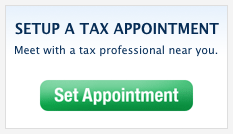How to Avoid Overpaying for Taxes
It may be hard to believe, but the vast majority of tax paying citizens in the United States are effectively giving away money each year by overpaying their taxes. While some may prefer to get a refund check from the IRS, the truth is that there are much better ways to take advantage of the money instead of giving it away freely. Most people view their annual IRS check as a refund when it is actually something quite different. The refund comes from an overpayment of taxes over the course of the year and is just the IRS giving you what is rightly yours. What overpayment of taxes amounts to is a loan made to the government at ZERO interest. If done correctly, the same money could be put in a bank account or even more profitable investment vehicles to earn interest for you instead of for the government. Learning how to avoid overpaying your taxes will mean that this money can work for you. After all, it’s yours – why not use it?
The first place to start is to take a look at your withholding levels and make sure they are accurate. Most withholding rates in the United States are done with the W-4 form, technically called the Employee’s Withholding Allowance Certificate. When you start a new job, your employer is required to have you fill out this form to declare how much money should be kept from your paycheck to pay taxes. The amount is determined based on how accurately you fill out the form. The first question is whether you are filing an individual or joint return. If you are not married, this is easy, just mark the individual box. If you are married, it gets a bit more complicated. You have the option of filing separately or jointly. The correct decision will vary depending on your personal married situation, but most couples get more benefits from filing together.
The next question on the W-4 is how many withholding allowances you are claiming. A withholding allowance is simply how many personal exemptions you will claim on your tax return. In addition to the numerical options, you can also declare that you are exempt from taxes. This is a rare situation and is not usually involved in a standard working relationship between employer and employee. To figure out the right number of allowances to claim, there are a few things to keep in mind, such as the number of jobs that you work and the job of your spouse if he or she is working. The IRS provides worksheets on the second page of the W-4 and also online to make sure you come up with the accurate number. Each allowance added lowers the amount of tax that will be withheld. Adjusting the number of allowances is the biggest thing you can do to lower your refund and get more money in your regular paychecks.
After these steps have been done, you will need to remember to change your W-4 as your personal situation changes, due to marriages and divorces and births and deaths of dependents. Instead of spending the extra money that shows up in your regular paycheck, a good idea is to invest the difference and gain interest on the same refund you would get at the end of the fiscal year.
Have a tax question? Ask one of our tax professionals.



